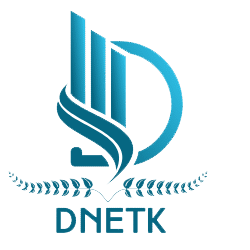In today’s rapidly evolving digital and industrial Wattinen landscape, new ideas, technologies, and concepts emerge that aim to transform the way we live, work, and interact with our environment. One such concept that has been gaining attention recently is Wattinen. Although relatively new to many, Wattinen is quickly becoming a subject of interest for professionals, innovators, and everyday users alike. This article provides a detailed exploration of Wattinen—its origins, meaning, applications, benefits, challenges, and future potential.
What is Wattinen?
The term Wattinen is often associated with innovation in the fields of energy management, sustainability, and digital transformation. At its core, Wattinen refers to solutions, systems, or platforms designed to optimize power consumption, improve efficiency, and reduce waste. The name itself seems to derive from “watt,” a standard unit of power, highlighting its connection to energy and performance.
However, Wattinen is not limited to just electricity. It is an evolving concept that touches various industries, including:
- Smart homes and IoT (Internet of Things)
- Renewable energy systems
- Industrial automation
- Artificial intelligence and data analytics
- Consumer lifestyle applications
In essence, Wattinen is about harnessing technology and intelligence to create more efficient and sustainable systems.
The Origins of Wattinen
The idea behind Wattinen has roots in the global push toward sustainability and energy-conscious living. As societies face growing concerns about climate change, rising energy costs, and resource depletion, businesses and innovators began searching for ways to manage power consumption more intelligently.
Wattinen emerged as a forward-thinking solution that bridges the gap between modern technology and sustainable practices. By integrating smart algorithms, connected devices, and real-time data analytics, Wattinen-based systems allow individuals and organizations to understand, control, and optimize their energy use.
Key Features of Wattinen
Wattinen encompasses several distinctive features that make it a versatile and impactful concept:
1. Smart Energy Management
At its heart, Wattinen helps monitor and optimize power usage in real time. Whether at home or in an industrial setting, it ensures that energy is consumed only when necessary, avoiding waste.
2. Integration with IoT Devices
Wattinen solutions often connect with smart sensors, appliances, and industrial machines. These devices communicate data about energy consumption, temperature, and performance to provide actionable insights.
3. Artificial Intelligence and Automation
By using AI-driven algorithms, Wattinen can predict consumption patterns, automatically adjust settings, and recommend energy-saving strategies.
4. User-Friendly Interfaces
Most Wattinen platforms come with apps or dashboards that present data in a simple, visual format. This makes it easy for users to track their energy footprint and make informed decisions.
5. Sustainability Focus
Reducing carbon emissions and promoting green energy adoption is central to Wattinen’s philosophy. Many implementations encourage renewable energy integration like solar and wind.
Applications of Wattinen
Wattinen’s flexibility makes it applicable across various industries and settings. Here are some key areas where Wattinen is making an impact:
1. Smart Homes
In households, Wattinen can be used to control heating, lighting, and appliances. For example, a Wattinen system might lower heating when no one is home or reduce lighting automatically at sunrise.
2. Corporate and Industrial Settings
Factories and offices consume significant amounts of energy. Wattinen helps monitor machinery, reduce idle power consumption, and ensure optimal use of resources, translating into cost savings and sustainability.
3. Renewable Energy Systems
For solar panel or wind turbine users, Wattinen can optimize when to store energy, when to use it, and when to feed it back into the grid for maximum efficiency.
4. Transportation and Mobility
Electric vehicles and charging stations can also benefit from Wattinen’s intelligent scheduling, ensuring that charging happens during off-peak hours to reduce costs and load on the grid.
5. Community and Urban Planning
On a larger scale, Wattinen can contribute to the development of smart cities, where public lighting, traffic systems, and utilities are optimized for sustainability and efficiency.
Benefits of Wattinen
The adoption of Wattinen offers multiple advantages, making it attractive for individuals, businesses, and governments alike:
- Cost Savings: By reducing unnecessary energy use, Wattinen helps lower electricity bills.
- Sustainability: It reduces carbon footprints and supports eco-friendly initiatives.
- Convenience: Automation and AI mean less manual intervention is required.
- Scalability: Wattinen can be applied to small homes or entire cities.
- Data-Driven Insights: Users gain a deeper understanding of their energy habits and can make better decisions.
Challenges of Wattinen
Despite its promise, Wattinen faces some challenges that need to be addressed for widespread adoption:
- High Initial Costs: Implementing Wattinen systems, especially at industrial or city levels, requires significant investment.
- Privacy and Security: Since Wattinen relies on IoT and data collection, ensuring data protection and cybersecurity is critical.
- Technical Complexity: Some users may find it difficult to understand or operate advanced Wattinen systems without training.
- Infrastructure Limitations: In regions with outdated grids or poor connectivity, Wattinen’s potential may be limited.
The Future of Wattinen
Looking ahead, Wattinen is expected to become a cornerstone of sustainable living and smart technology integration. With governments pushing for greener policies and industries moving toward digital transformation, Wattinen has the potential to expand globally.
Some future possibilities include:
- AI-powered predictive models that make Wattinen even more intelligent.
- Blockchain integration for transparent and secure energy trading.
- Expansion into developing countries, providing accessible energy management solutions.
- Stronger renewable energy ties, helping communities rely less on fossil fuels.
As society continues to balance innovation with sustainability, Wattinen could evolve into a standardized framework for energy efficiency worldwide.
Conclusion
Wattinen represents more than just a technological innovation—it is a vision of a smarter, greener, and more connected future. By combining energy management, AI, IoT, and sustainability principles, Wattinen empowers individuals, businesses, and governments to reduce costs, save resources, and build eco-friendly communities.
While challenges like cost and security remain, the benefits of Wattinen are undeniable. As the world continues to transition toward renewable energy and smart technologies, Wattinen stands at the forefront of this transformation, guiding us toward a sustainable tomorrow.
FAQs about Wattinen
Q1: Is Wattinen only for large corporations?
No, Wattinen can be applied to both small households and large industries. Its scalability makes it versatile for different users.
Q2: How does Wattinen save energy?
It monitors consumption patterns, automates systems, and reduces unnecessary usage, ensuring energy is used efficiently.
Q3: Is Wattinen compatible with renewable energy?
Yes, it integrates seamlessly with renewable sources like solar and wind, optimizing usage and storage.
Q4: Does Wattinen require internet connectivity?
In most cases, yes. Since it relies on IoT devices and data analytics, stable connectivity is important.
Q5: What is the future of Wattinen?
Wattinen is expected to play a key role in smart homes, smart cities, and global sustainability efforts, with continued advancements in AI and renewable integration.

